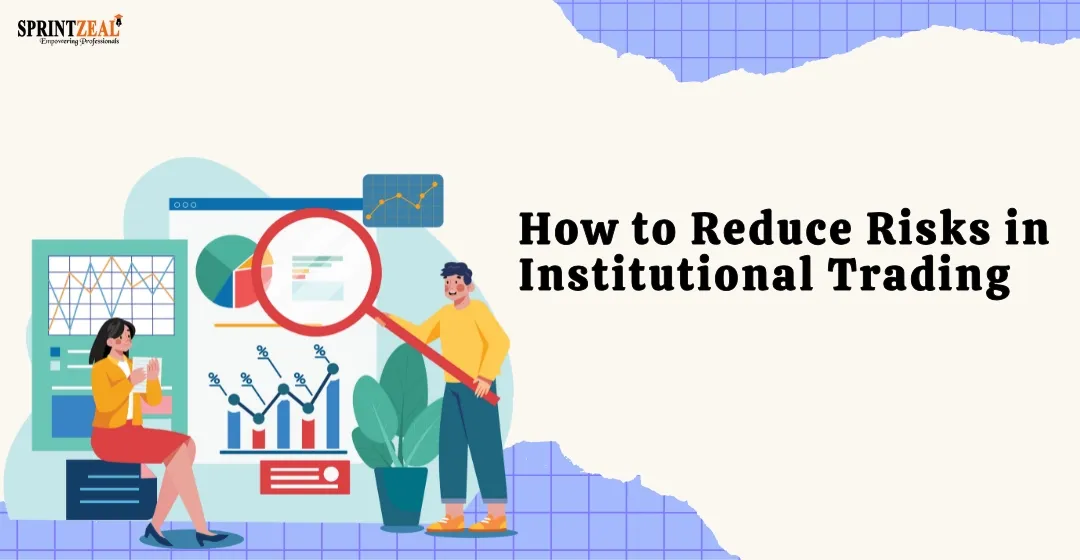Strategies for Implementing Effective Supply Chain Risk Management
-
 By Sushmith
By Sushmith - Published on Jul 24 2024

Table of Contents
Supply Chain Risk Management: An Overview
Effective supply chain risk management is crucial for ensuring business continuity and resilience in today’s complex and interconnected world of Supply Chain Management. Modern supply chains are characterized by their intricacies and interdependencies, which can amplify the impact of disruptions. To navigate these challenges, organizations must adopt proactive risk management strategies that address potential threats and ensure smooth operations.
Understanding Supply Chain Risk Management
Supply chain risk management involves identifying, assessing, and mitigating risks that could disrupt the flow of goods and services. It encompasses a wide range of potential threats, including internal factors such as operational inefficiencies and external factors like geopolitical events and natural disasters.

Effective risk management in the supply chain is vital for maintaining business operations, protecting financial performance, and ensuring customer satisfaction.
1. Scope of Supply Chain Risks
Supply chain risks can stem from various sources, including:
- Internal Factors: Production delays, quality issues, and workforce disruptions.
- External Factors: Supplier failures, natural disasters, political instability, and economic fluctuations.
2. Impact of Supply Chain Disruptions
Supply chain disruptions, such as unforeseen delays or shortages, can have severe consequences for business operations, leading to delayed deliveries, increased costs, and lost revenue. Additionally, they can damage an organization’s reputation and erode customer trust. Effective risk management in supply chain management helps mitigate these impacts and supports business continuity.
Common Risks in Supply Chain Management
Several types of risks can affect supply chains, each requiring tailored strategies for management.
1. Operational Risks
Operational risks include production delays, quality control issues, and logistical challenges. These risks can disrupt the smooth flow of goods and impact overall efficiency.
2. Financial Risks
Financial risks involve fluctuations in currency exchange rates, changes in market demand, and the financial instability of suppliers. These risks can affect the cost and availability of supplies.
3. Geopolitical Risks
Geopolitical risks arise from political instability, trade restrictions, and regulatory changes. These factors can disrupt international supply chains and impact the movement of goods across borders.
4. Environmental Risks
Environmental risks include natural disasters, climate change, and sustainability concerns. These risks can lead to supply chain disruptions and increased costs due to the need for compliance with environmental regulations.
Examples
- Natural Disasters:
The 2011 earthquake and tsunami in Japan disrupted global supply chains, particularly in the automotive and electronics industries. - Geopolitical Events:
Trade tensions between the US and China have led to increased tariffs and supply chain uncertainties for many businesses.
Interdependencies in Supply Chains
The interconnected nature of supply chains means that a disruption in one area can have a ripple effect throughout the entire network. For example, a delay in raw material delivery can halt production and delay product shipments, affecting multiple stakeholders. Effective supply chain and risk management strategies are essential to mitigate such impacts and ensure smooth operations across the network.
Strategies for Identifying Supply Chain Risks
Identifying potential supply chain risks is the first step in effective risk management. Several methods can be used to help organizations anticipate and prepare for disruptions.

1. Risk Mapping and Scenario Analysis
Risk mapping involves identifying potential risks and mapping out their possible impact on the supply chain. Scenario analysis helps organizations explore various risk scenarios and develop contingency plans.
2. Continuous Monitoring and Early Warning Systems
Continuous monitoring of supply chain activities and external factors allows organizations to detect potential risks early. Early warning systems can provide alerts about emerging threats, enabling proactive responses.
3. Data Analytics and Predictive Modeling
Data analytics, predictive modeling, and effective risk management in supply chain management can identify patterns and trends that indicate potential risks. By analyzing historical data and using predictive algorithms, organizations can forecast potential disruptions and take preventive measures.
Companies integrate these analytical capabilities into their operations through a comprehensive procurement management system that combines supplier performance tracking, demand forecasting, and risk assessment tools to enable proactive decision-making across the entire supply chain.
Mitigation Strategies for Supply Chain Risks
Mitigating supply chain risks involves implementing strategies that reduce the likelihood and impact of disruptions.
1. Diversification of Suppliers
Diversifying the supplier base reduces dependency on single suppliers and enhances supply chain resilience.
- Benefits: Increased flexibility, reduced risk of supply chain disruptions, and improved negotiation power.
- Tips: Identify and qualify alternative suppliers, establish multi-sourcing strategies, and maintain relationships with backup suppliers.
2. Strengthening Supplier Relationships
Building strong, collaborative relationships with key suppliers fosters trust and transparency, which are essential for effective risk management.
- Strategies: Regular communication, joint risk management initiatives, and long-term partnership agreements.
- Examples: Shared risk assessments, co-developing contingency plans, and aligning business goals.
3. Implementing Technology Solutions
Technology plays a crucial role in enhancing supply chain visibility and risk management.
- Supply Chain Management Software: Improves tracking, forecasting, and decision-making.
- Blockchain: Enhances transparency and traceability.
- IoT Devices: Provide real-time monitoring of supply chain activities.
- Cybersecurity Measures: Protect supply chain data and systems from cyber threats.
The Role of ISO Standards in Supply Chain Risk Management
ISO standards provide frameworks and guidelines that help organizations implement effective supply chain risk management practices. These standards ensure that organizations can effectively manage risks across supply chain networks, fostering resilience and continuity.

ISO 28000: Security Management Systems for the Supply Chain
ISO 28000 focuses on security management within the supply chain, helping organizations establish robust security management systems.
- Relevance: Addresses potential security threats and ensures the safe flow of goods and services.
- Benefits: Enhanced security, improved risk management, and increased stakeholder confidence.
ISO 31000: Risk Management Guidelines
ISO 31000 provides principles and guidelines for effective risk management, applicable to any organization.
- Principles: Structured approach, continuous improvement, and stakeholder engagement.
- Application: Can be applied to supply chain risk management to enhance resilience and ensure consistent risk management practices.
Conclusion
Effective supply chain risk management is essential for ensuring business continuity and resilience. By adopting proactive risk management in supply chain management strategies, diversifying suppliers, strengthening supplier risk management relationships, and implementing technology solutions, organizations can mitigate supply chain risks and enhance their overall resilience.
Aligning practices with ISO standards, such as ISO 28000 and ISO 31000, further strengthens risk management frameworks. Organizations must prioritize continuous improvement and leverage data analytics to stay ahead of potential disruptions.

Evaluate and enhance your supply chain risk management practices today to safeguard your business against future uncertainties. And if you are finding a way to do that, you are in the right place. Sprintzeal offers a wide range of training programs covering potential domains like Risk Management, Project Management, Quality Management, Business Management, and more.
Explore our options to enroll in customized corporate training tailored to fit all your organizational needs.
Our newsletter is free! Subscribe, stay updated with the latest insights, and get early access to exclusive training discounts!
Subscribe to our Newsletters
Popular Programs
Trending Posts
Leading Risk Governance Practices for Organizations to Mitigate Threats
Last updated on Jul 16 2024
Trends and Challenges in Risk Management: A Guide to ISO Standards
Last updated on Jun 20 2024
Environmental Risks and Sustainability Challenges: How to Adapt?
Last updated on Aug 20 2024
How to Reduce Risks in Institutional Trading
Last updated on May 27 2025
Proactive Strategies for Mitigating Information Security Risks
Last updated on Jul 8 2024
ISO/IEC 27005 Principles for Strategic Risk Management Decision Making
Last updated on Jul 30 2024
Categories
- Other 68
- Agile Management 48
- Cloud Computing 53
- Project Management 171
- Big Data 65
- Business Management 86
- Digital Marketing 76
- IT Service Management 29
- Programming Language 57
- AI and Machine Learning 73
- IT Security 110
- Quality Management 78
- IT Hardware and Networking 25
- Microsoft Program 4
- Workplace Skill Building 12
- Risk Management 9
- Information Security 8
- Leadership and Management 7
- Corporate Training and Development 1
Trending Now
Proactive Risk Management in Information Security: Guide to Staying Ahead of Threats
ArticleTrends and Challenges in Risk Management: A Guide to ISO Standards
ArticleProactive Strategies for Mitigating Information Security Risks
ArticleLeading Risk Governance Practices for Organizations to Mitigate Threats
ArticleISO/IEC 27005 Principles for Strategic Risk Management Decision Making
ArticleManaging Risks Associated with Digital Transformation
ArticleEnvironmental Risks and Sustainability Challenges: How to Adapt?
ArticleHow to Reduce Risks in Institutional Trading
Article

















